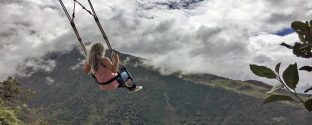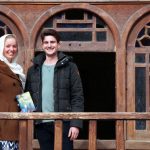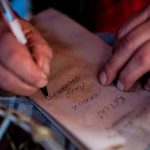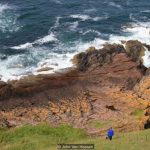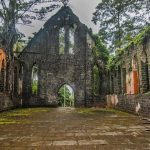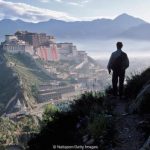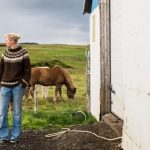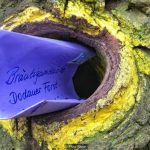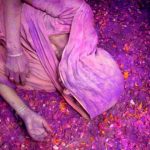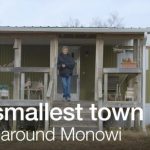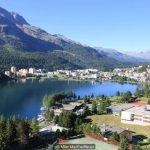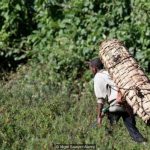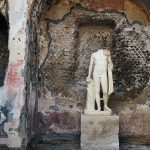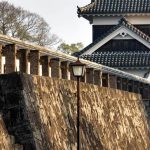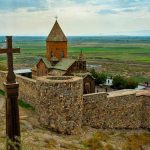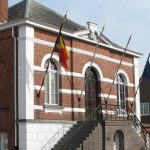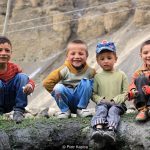Where you can swing over the edge of the earth? Every morning before the sun rises, 75-year-old Carlos Sánchez says a prayer in his one-room hut, grabs a pair of binoculars and slowly climbs up into a lonely treehouse that leans precariously over the edge of a mountain.
From his perch high above the misty folds of the Ecuadorian Andes, Sánchez peers across the emerald valley’s patchwork fields towards the towering 5,023m-tall crater of Tungurahua, a wildly active stratovolcano whose name means ‘throat of fire’ in the local Quechua language. He then scans the deep ravines and twisting chasms that shoot dangerously down Tungurahua’s slopes towards his family’s hometown of Baños, until they disappear into the clouds below.
“Right now she’s taking a rest,” Sánchez said, turning away from the crag and carefully bending his bad knee down the steps. “Better feed the chickens before the whole world arrives.”
Known in Baños as ‘the volcano-watcher’, Sánchez is the oldest member of Ecuador’s national Geophysical Institute and the only person in the world who operates a seismic monitoring station from the branches of a tree. For the past 18 years he has lived all alone on this remote bluff, bound by a promise that he made long ago to serve as an unpaid volunteer just 2.5km from a crater that has been periodically spewing fire, smoke and molten lava since 1999.
But in the last few years, something strange has started happening: people from all over the planet are coming to what was once a quiet cow pasture to find Sánchez’s monitoring station – all because he decided to dangle a wooden swing from his treehouse in hopes that his grandchildren would come visit.
They did. Soon, a few strangers began showing up to ask if they could go for a ride, too. Then in 2014, two members of a visiting group of tourists were taking turns on Sánchez’s swing when Tungurahua suddenly erupted. The pair bolted down the mountain, but not before one snapped a photo of the other gazing up at a surging 8,000m-tall ash plume while appearing to swing over an abyss at the edge of the Earth.
Sometimes things explode unexpectedly
The image received international recognition in a National Geographic photo competition and quickly spread around the world. Now, hundreds of people every day are following the trail at the edge of Baños, hiking 2.5 hours up the sharp side of a mountain and pushing each other off a 30m ledge at what has become known as La Casa del Arbol (The Treehouse).
“The swing just started as a simple idea to help bring my family together on the weekends,” Sánchez said, looking out from his chicken coop as the day’s first throng of tourists arrived. “But sometimes things explode unexpectedly.”
“End of the World” received international recognition in a 2014 National Geographic photo competition (Credit: Credit: Sean Hacker Teper/National Geographic Traveler Photo Contest)
“End of the World” received international recognition in a 2014 National Geographic photo competition (Credit: Sean Hacker Teper/National Geographic Traveler Photo Contest)
That’s what happened in October 1999. After an 81-year nap, Tungurahua roared to life with a series of violent eruptions. As hot gas, ash and rocks rained down on nearby villages, the president of Ecuador ordered Sánchez’s family and the 16,000 other residents of Baños to evacuate, giving them just four hours to collect what they could and not telling them when or if they could return to their homes.
Against the government’s mandate, Sánchez drove back to Baños on 20 December to discover a ghost town. The buildings were abandoned, the streets were coated with ash, but his home and town were miraculously spared from any damage. Unsure if his animals had survived in the mountains, Sánchez slowly drove up the dizzying road towards his pasture.
When he arrived, he saw that his cows were grazing peacefully and his neighbours’ farms were unharmed. He knelt down, crossed himself and promised the Virgin Mary (the patron saint of Baños) that he would remain there to watch the volcano and help protect the people living in the valley until the eruptions ended.
“Eighteen years later, she’s still active,” Sánchez said. “So I’m still here.”
Sánchez’s humble hilltop monitoring station began with just a pair of binoculars and a two-way radio. Before constructing his hut, he often slept in a tent, shaking ash from his makeshift rooftop in the mornings and carefully monitoring Tungurahua’s north-east flank throughout the day.
A team of professional volcanologists at Tungurahua’s base trained Sánchez to radio in as soon as he heard rumblings, smelled sulphur or spotted pyroclastic flows that could rapidly plunge toward Baños. Soon, the retired electrician and former firefighter helped the volcanologists install seismic metres, tilt metres and a sulphur dioxide monitor on his land.
The only woman he was waiting on was Mama Tungurahua
It was at about this time that Sánchez’s wife, Lidia, started growing suspicious of what her husband was doing up in the cow pasture. During bouts of intense seismic activity, Sánchez needed to remain on call 24-7 and he sometimes couldn’t come back to Baños to see her for several weeks at a time. Convinced that he was living with someone else, Lidia packed up his clothing from their home, stuffed it in a bag and marched up the side of the mountain to meet this mysterious other woman.
“When I arrived, I saw that he was all alone, living just on bread and water but fulfilling the promise that he made to protect others,” Lidia said. “The only woman he was waiting on was Mama Tungurahua.”
Over the years, he hasn’t had to wait on her very long.
“Of the 1,500 volcanoes in the world that we monitor, Tungurahua is one of the 10 most active,” said Ben Andrews, director of the Smithsonian’s Global Volcanism Program. “Since 1999, we’ve had more than 100 weekly reports of eruptions, explosions, ash columns and lava flows. It’s certainly a cause for concern.”
In fact, in 2006 Tungurahua sent a molten river down its flanks that buried three neighbouring villages and killed six people. Yet, even as the scorching torrent rolled down the slopes, Sánchez refused to leave. Choking on fumes, he hid inside a small slit in the trunk of a motilón tree while rocks pelted the other side. For two hours, Sánchez poked his head out from the tree’s base to provide live updates on his radio to the mayor of Baños that helped evacuate hundreds of families.
The motilón tree protected Sánchez and the town, and Sánchez decided that it would be sturdy enough to build an 8m-tall lookout post up in its branches.
The swing followed two years later in 2008, and pretty soon Sánchez’s wife, five children and 11 grandchildren were coming to have picnics, celebrate family birthdays and keep him company whenever the volcano was quiet. When Tungurahua rumbled at night, Sánchez would sit alone in the treehouse, softly playing his harmonica under the stars to try and lull it to sleep.
“We have a complicated relationship,” Sánchez said. “Sometimes she’s my friend, sometimes she’s my enemy.”
Today, Sánchez keeps the volcanic rocks that nearly killed him in the 2006 eruption in a small office below his hut, along with detailed maps, ash samples and a certificate from the president of Ecuador citing Sánchez’s ‘indescribable commitment and service to the country’. There are now 500 volcano monitoring stations in Ecuador, but Sánchez is still the only person who watches over Baños from Tungurahua’s north-east slope.
“Carlos can see things from up in his treehouse that no-one else can,” said Patricia Mothes, former head of Ecuador’s Geophysical Institute. “His early warnings have helped us save lives. He’s fundamental.”
Sometimes she’s my friend, sometimes she’s my enemy
Since March 2016, when Tungurahua thundered with more than 70 explosions and shot lava bombs down its western slope, the ‘throat of fire’ has quietened to a whisper. Yet, both Mothes and Sánchez maintain that it’s only a matter of time before she roars again. Whenever Sánchez observes any potential danger or receives a warning from the volcanologists, he urges visitors to flee down the mountain to safety.
“I don’t have enough hard hats for everyone,” Sánchez said, gazing down from the leaf tops on the line of thrill-seekers now snaking around his property.
In a way, La Casa del Arbol feels like two parallel universes. On any given day, throngs of camera-toting tourists wait up to 30 minutes in line to soar over a deep ravine, shrieking with a mixture of wide-eyed wonder and white-knuckled terror. Afterwards, they all take the same Instagram shot, clambering up the treehouse’s two flights of steps, completely oblivious to the man in the orange hard hat poking around with binoculars.
Patricia Mothes: “Carlos can see things from up in his treehouse that no-one else can” (Credit: Credit: Eliot Stein)
Patricia Mothes: “Carlos can see things from up in his treehouse that no-one else can” (Credit: Eliot Stein)
When the screeches and screams from the swing get too loud, Sánchez descends from the canopy to wipe off his seismic equipment, feed his rabbits or clear the trail leading up the mountain with a machete – usually with his loyal cat Negrito following a few steps behind.
For nine years, Sánchez happily let anyone who wandered onto his property climb up into his treehouse and swoop from his grandchildren’s swing free of charge. He only asked that people sign his guestbook. But after the National Geographic photo of his swing went viral two years ago, Baños’ ministry of tourism demanded that the volcano-watcher also start monitoring the growing number of visitors to his pasture – and charging them admission.
“I wanted all the families in Baños to still be able to enjoy this place as much as my family had,” Sánchez said. “So I said, ‘Okay, I’ll start charging an entrance, but it’s only $1, and kids are half-price’.”
Sánchez now has a stack of 14 200-page guestbooks filled with messages in languages he never knew existed. In the past two years, he’s used the modest entrance fees to send several of his grandchildren to college and hire a team of ‘business associates’: his family.
Now, Sánchez’s son Gabriel maintains a small zip line on the property and a newly added second swing that dangles from the other end of the treehouse. Sánchez’s granddaughters, Mayte and Mariza, take turns running a small ticket booth at the edge of the pasture. Another granddaughter, Julie, sells chicken soup and Ecuadorian fritada (fried pork) by the treehouse, and just wrote her college thesis on Tungurahua – with a little help from her grandfather, of course. And Lidia takes a bus each morning from Baños toward the crater of the volcano to spend time with the man she married 50 years ago at its base.
“At night when everyone leaves, and it’s just our family, I sometimes sneak back on to the swing and close my eyes,” said Mayte, now 17. “It reminds me of being a little girl.”
As another swarm of strangers descended on his property, Sánchez walked away from the crowds to the edge of the mountain, looked down over the valley and removed his hard hat.
“This is the spot where I knelt, swearing to help others leave in time even if it meant that there was no time for me,” Sánchez said, struggling to lower his knee 18 years later. “A promise between people is serious, but an oath with God is sacred.”
